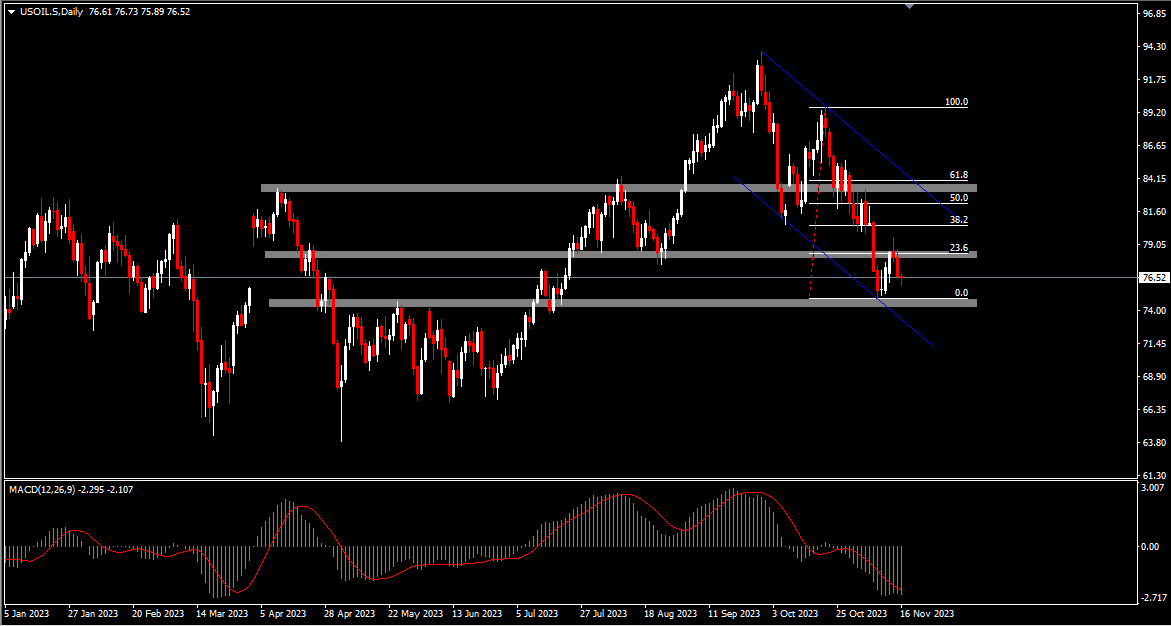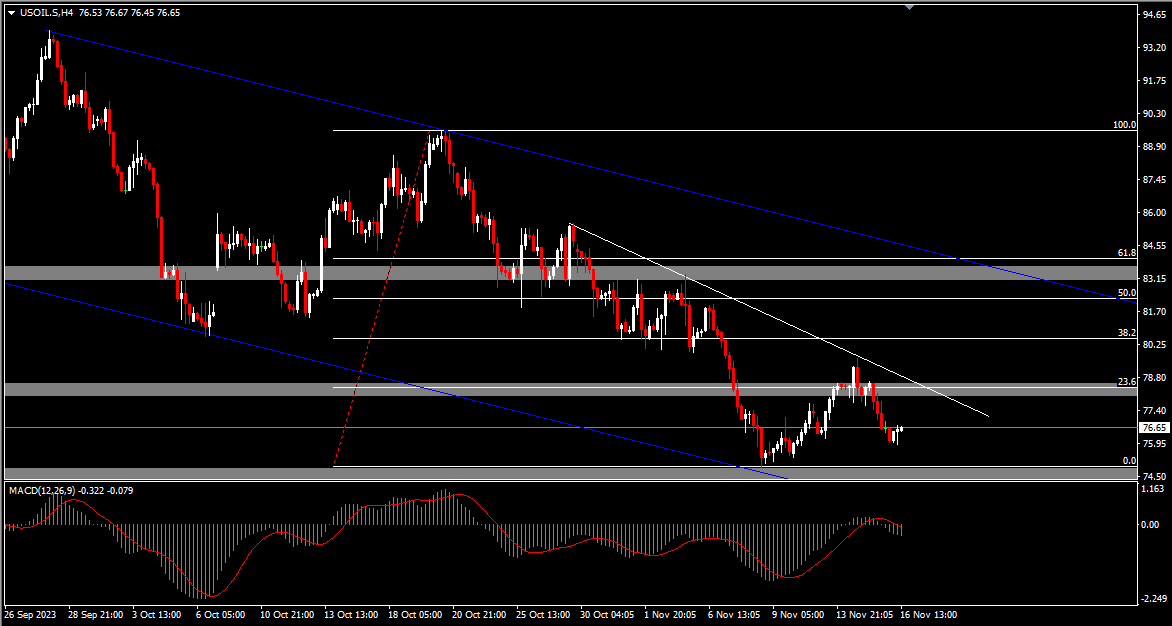WTI crude oil witnessed a discernible retreat, influenced by several converging factors that underscore the intricate dynamics shaping the oil market. The appreciating value of the Dollar, a perennial force in commodity markets, played a significant role, casting a shadow over oil prices. Simultaneously, the imminent threat of a US government shutdown, contingent on the passage of the stopgap spending bill by November 17, introduced an additional layer of uncertainty to the oil market.
Compounding the price dip was the unexpected surge in crude inventories, a revelation from the US Energy Information Administration (EIA) that resonated throughout the market. However, the most pronounced impact came from the announcement by the Iraqi oil minister. The revelation that Iraq and Turkey had reached an agreement to resume oil exports in the north sent ripples through the oil landscape. This agreement essentially paved the way for oil companies to recommence production in the Kurdistan region within a mere three days, injecting an additional 400,000 barrels of crude into the daily supply chain.
While the overall trend displayed a certain weakness, it wasn’t characterized by an outright freefall. Instead, the prices exhibited a pattern of fluctuation, reflecting the nuanced dynamics at play.
The recent fragility in oil prices once again places OPEC+ under the spotlight. Despite their concerted efforts throughout the year, the tenuous balance in the oil market seems to elude them. The pullback in prices adds pressure on OPEC+ as they face the challenge of sustaining stability. The market sentiment, leading up to the next meeting, is unlikely to lean towards anticipations of an output cut resolution. It appears the delicate equilibrium achieved by OPEC+ hangs in the balance.
Analyzing the inventory report released recently, crude oil inventories registered a noticeable uptick. However, the complexities of the market were highlighted by concurrent oil de-stocking, particularly evident in the decline of US strategic oil reserves. The aggregate data paints a picture of neutrality, with the downside momentum appearing somewhat restrained in the short term.
The US EIA’s revealed that crude oil inventories surged by 3.6 million barrels for the week of November 10, surpassing the anticipated increase of 1.793 million barrels, added an extra layer of intricacy. Cushing, Oklahoma crude stocks increased by 1.9 million barrels. On the refined oil front, stocks experienced a decrease of 1.4 million barrels, contrary to expectations. Gasoline stocks mirrored the unexpected trend by declining by 1.5 million barrels, defying the projected increase of 622,000 barrels. Notably, US commercial crude oil imports, excluding strategic reserves, dipped to 6.373 million barrels per day in the week of November 10, marking a decrease of 21,000 barrels per day from the previous week.
Examining WTI crude oil’s current status from a technical perspective, it’s evident that it’s trading within a descending channel on the daily timeframe. The price, hovering around $76.3 per barrel, prompts considerations about its potential moves.
There are two possible scenarios. If the support at $74.9 holds, there’s a chance of an upward move towards the 23.6% Fibonacci level at $78.3 per barrel. Conversely, a break below $74.5 might lead to a decline to $72.3 per barrel, signaling a potential shift in market sentiment favoring the bears.
The MACD indicator on the daily timeframe supports a bearish outlook, being below the zero line and beneath the signal line. This suggests additional bearish momentum.
This sentiment is confirmed on the 4-hour timeframe, with the MACD indicator also positioned below the zero line and under the signal line, emphasizing sustained bearish pressure.
Click here to access our Economic Calendar
Francois du Plessis
Market Analyst
Disclaimer: This material is provided as a general marketing communication for information purposes only and does not constitute an independent investment research. Nothing in this communication contains, or should be considered as containing, an investment advice or an investment recommendation or a solicitation for the purpose of buying or selling of any financial instrument. All information provided is gathered from reputable sources and any information containing an indication of past performance is not a guarantee or reliable indicator of future performance. Users acknowledge that any investment in Leveraged Products is characterized by a certain degree of uncertainty and that any investment of this nature involves a high level of risk for which the users are solely responsible and liable. We assume no liability for any loss arising from any investment made based on the information provided in this communication. This communication must not be reproduced or further distributed without our prior written permission.





















